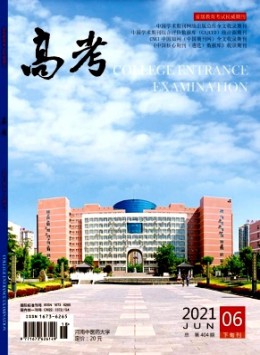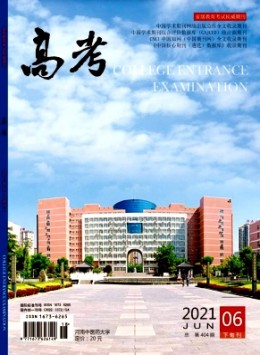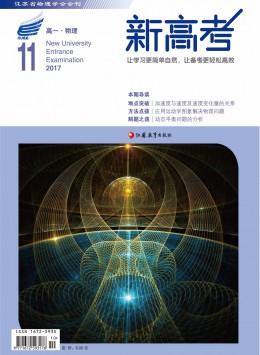高考英語作文萬能句子精選(九篇)
前言:一篇好文章的誕生,需要你不斷地搜集資料、整理思路,本站小編為你收集了豐富的高考英語作文萬能句子主題范文,僅供參考,歡迎閱讀并收藏。

第1篇:高考英語作文萬能句子范文
1.As far as ...is concerned 就……而言
2.It goes without saying that... 不言而喻,...
3.It can be said with certainty that... 可以肯定地說......
4.As the proverb says, 正如諺語所說的,
5.It has to be noticed that... 它必須注意到,...
6.It's generally recognized that... 它普遍認為...
7.It's likely that ... 這可能是因為...
8.It's hardly that... 這是很難的......
9.It's hardly too much to say that... 它幾乎沒有太多的說...
10.What calls for special attention is that...需要特別注意的是
11.There's no denying the fact that...毫無疑問,無可否認
12.Nothing is more important than the fact that... 沒有什么比這更重要的是…
13.what's far more important is that... 更重要的是…
2銜接句型
1.A case in point is ... 一個典型的例子是...
2.As is often the case...由于通常情況下...
3.As stated in the previous paragraph 如前段所述
4.But the problem is not so simple. Therefore 然而問題并非如此簡單,所以……
5.But it's a pity that... 但遺憾的是…
6.For all that...對于這一切...... In spite of the fact that...盡管事實......
7.Further, we hold opinion that... 此外,我們堅持認為,
8.However , the difficulty lies in...然而,困難在于…
9.Similarly, we should pay attention to... 同樣,我們要注意...
10.not(that)...but(that)...不是,而是
11.In view of the present station.鑒于目前形勢
12.As has been mentioned above...正如上面所提到的…
13.In this respect, we may as well (say) 從這個角度上我們可以說
14.However, we have to look at the other side of the coin, that is... 然而我們還得看到事物的另一方面,即 …
3結尾句型
1.I will conclude by saying... 最后我要說…
2.Therefore, we have the reason to believe that...因此,我們有理由相信…
3.All things considered,總而言之 It may be safely said that...它可以有把握地說......
4.Therefore, in my opinion, it's more advisable...因此,在我看來,更可取的是…
5.From what has been discussed above, we may safely draw the conclusion that….通過以上討論,我們可以得出結論…
6.The data/statistics/figures lead us to the conclusion that….通過數據我們得到的結論是,....
7.It can be concluded from the discussion that...從中我們可以得出這樣的結論
8.From my point of view, it would be better if...在我看來……也許更好
4四.舉例句型
1.Let's take...to illustrate this.
2.let's take the above chart as an example to illustrate this.
3. Here is one more example.
4.Take … for example.
5.The same is true of….
6.This offers a typical instance of….
7.We may quote a common example of….
8.Just think of….
5五.常用于引言段的句型
1. Some people think that …. 有些人認為…To be frank, I can not agree with their opinion for the reasons below. 坦率地說,我不能同意他們的意見,理由如下。
2. For years, … has been seen as …, but things are quite different now.多年來,……一直被視為……,但今天的情況有很大的不同。
3. I believe the title statement is valid because…. 我認為這個論點是正確的,因為…
4. I cannot entirely agree with the idea that ….我無法完全同意這一觀點的… I believe….
5. My argument for this view goes as follows.我對這個問題的看法如下。
6. Along with the development of…, more and more….隨著……的發展,越來越多…
7. There is a long-running debate as to whether….有一個長期運行的辯論,是否…
8. It is commonly/generally/widely/ believed /held/accepted/recognized that….它通常是認為…
9. As far as I am concerned, I completely agree with the former/ the latter.就我而言,我完全同意前者/后者。
10. Before giving my opinion, I think it is essential to look at the argument of both sides.在給出我的觀點之前,我想有必要看看雙方的論據。
3六 表示比較和對比的常用句型和表達法
1. A is completely / totally / entirely different from B.
2. A and B are different in some/every way / respect / aspect.
3. A and B differ in….
4. A differs from B in….
5. The difference between A and B is/lies in/exists in….
6. Compared with/In contrast to/Unlike A, B….
7. A…, on the other hand,/in contrast,/while/whereas B….
8. While it is generally believed that A …, I believe B….
9. Despite their similarities, A and B are also different.
10. Both A and B …. However, A…; on the other hand, B….
11. The most striking difference is that A…, while B….
7七 演繹法常用的句型
1. There are several reasons for…, but in general, they come down to three major ones.有幾個原因……,但一般,他們可以歸結為三個主要的。
2. There are many factors that may account for…, but the following are the most typical ones.有許多因素可能占...,但以下是最典型的。
3. Many ways can contribute to solving this problem, but the following ones may be most effective.有很多方法可以解決這個問題,但下面的可能是最有效的。
4. Generally, the advantages can be listed as follows.一般來說,這些優勢可以列舉如下。
5. The reasons are as follows.
8八 因果推理法常用句型
1.Because/Since we read the book, we have learned a lot.
2. If we read the book, we would learn a lot.
3. We read the book; as a result / therefore / thus / hence / consequently / for this reason / because of this, we've learned a lot.
4. As a result of /Because of/Due to/Owing to reading the book, we've learned a lot. 由于閱讀這本書,我們已經學到了很多。
5. The cause of/reason for/overweight is eating too much.
6.Overweight is caused by/due
to/because of eating too much.
第2篇:高考英語作文萬能句子范文
關鍵詞: 英語寫作 高考 有效訓練 英語書面表達能力
眾所周知,近幾年全國各地高考英語試卷無論在內容還是在形式上都發生了很大的變化,尤其是在寫作方面:1.內容多元化。從外事活動到青少年的課余活動;從單一說事到發表個人看法和評價;從介紹國外文化到介紹國內文化、名勝與人文傳統等;選題的特點表現在文化性、地方性和多元性三個方面。2.命題形式多樣化。目前的命題形式有漢語提綱、圖表提綱、直方圖配漢語提示、圖畫與漢語提示等。3.寫作形式的敘事化。那么,教師在高考備考中應該如何在寫作上進行有效的訓練呢?
一、動員與示范
精心準備、進行動員、示范與鼓勵,并從五個方面(謀篇布局獨樹一幟;巧用過渡詞使結構清晰自然流暢;用詞貼切生動豐富,善用短語標新立異;造句準確多變,活用復合句;語言語氣水融)詳細講評如何讓自己的文章充滿“亮點”,做到妙筆生花,體現對語言的駕馭能力,同時,為學生展示作文評分細則,并用例子加以說明。
二、學會欣賞并積累佳詞麗句
“讀書破萬卷,下筆如有神”。考生只有積累了一定量的短語、習慣表達和精彩句式,才能胸有成竹,行云流水般寫出優美的文章來。在這方面,首先要讓學生掌握一些“萬能詞句”,如連接性過渡詞,分為轉折類,遞進類……還有一些常用句型:“It goes without saying that...”,“The reason for/why...is that...”,“Only in this way can we...”;諺語“Every coin has two sides.”“All roads lead to Rome.”等。其次,要指導學生學會欣賞范文,并要求其準備一個小本,隨時摘抄積累精彩詞句。另外,每次講評作文時,要展示學生作文中出現的漂亮詞句讓大家互相學習,有時也可采用同桌互評尋找“亮點”法。
三、注重寫作策略的指導
“授人以魚,不如授之以漁”。學生掌握了一些寫作策略和寫作技巧,才能充分調動起寫作積極性。有了自覺性的內驅力,才能形成自主學習能力,主動書寫出錦繡文章來。指導學生掌握“書面表達高手訓練四招十二式”,同時,張貼一些有關寫作策略指導文章如“概括文章的技巧”、“使高中學生英語書面表達更具文采”、“行文簡潔,言簡意賅”,讓學生學習吸收從而應用到實踐中,還可讓作文寫得好的學生進行“寫作方法經驗談”或進行個別面批指導。
四、訓練循序漸進,形式多樣
“冰凍三尺,非一日之寒”。英語寫作能力并非是一蹴而就的。它必須由淺入深、由簡到繁、由易到難、循序漸進、一環緊扣一環地進行訓練。從近年高考英語“書面表達”閱卷分析上看,反映出的主要問題是:句子支離破碎,缺少必要的句子成分;詞不達意,沒能表達出所要表達的內容;漢語式的句子順序隨處可見;人稱指代不明,時態混亂;單詞拼寫錯誤很多……針對這些,結合語法復習進行句子層面、段落等的基礎階段訓練。如:連詞成句、合并句子、縮減句子、翻譯句子、改寫句子。
在寫作訓練中,教師應盡量采取多樣化的訓練方式和評改方式,讓學生保持較高的積極性。這樣才能充分發揮出他們的最高水平。如上所述,采用課內外相結合,課堂上以獨立完成為主,但有時讓同桌兩人一起完成任務,有時要求小組四人合作完成,有時讓一至兩人上黑板寫。至于評改方式,則有如下形式:
1.全批全改,然后講評。這樣有利于了解全體學生情況。講評分為三個部分:一是優秀句子及優秀文章展示,加以表揚;二是典型錯誤展示與分析,加以改正并且鼓勵;三是范文分析。
2.批改一個組。這樣往往也能反映出大多數學生的情況。老師就可以從改作業中解放出來,有更多時間備課。
3.學生互評。課堂上將作文本發下去,提出評改要求。批改者對有疑問的地方作記號,待互相討論取得一致意見后再更正。若有爭議的問題,可當場請教老師或查字典,及時糾正。學生得到了滿意的答案,心里總是挺高興的,他們的寫作興趣自然就會提高。最后,要求學生再對全文通讀幾遍,琢磨一下是否符合要求,盡量做到準確無誤。如發現錯誤,可作最后修改,謄寫工整,簽名(便于學生之間交流),交老師查閱。學生通過這種形式,能更直觀地認識到對方的優點和不足,從而提高自己的水平。
4.集體批改。老師選出有代表性的幾篇(也包括書寫漂亮和卷面雜亂的),利用展示臺投影出來,讓全班學生一起找佳句、病句,同時讓學生明確書寫工整美觀的重要性。此外,應要求學生每人有一個“糾錯本”,將平時在練習中的病句記錄下來,避免再三重復犯相同的錯誤,從而逐漸提高準確率。當然,同時也要展示、張貼或讓學生傳閱優秀習作以資鼓勵、交流,互相學習。
5.個別面改。適當給個別學生當面批改作文,針對性會更強,對他們來說,收獲會更大。
總之,只要持之以恒、勤寫苦練,一定可以輕松自如地表達自己的思想,也能夠在高考考場上大顯身手,書寫亮麗文章。
參考文獻:
[1]中華人民共和國教育部.普通高中英語課程標準(實驗).人民教育出版社,2003.
免责声明
本站为第三方开放式学习交流平台,所有内容均为用户上传,仅供参考,不代表本站立场。若内容不实请联系在线客服删除,服务时间:8:00~21:00。



